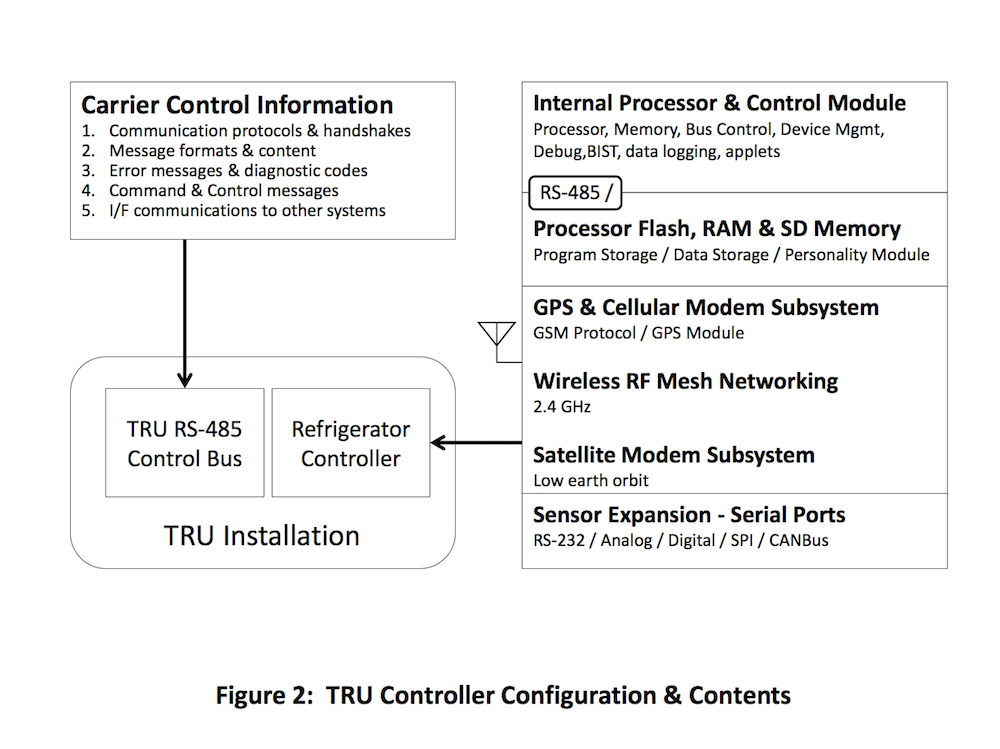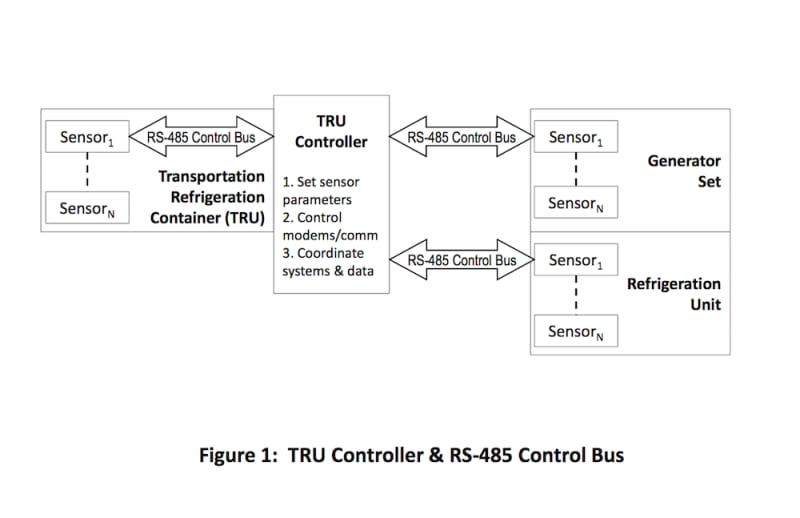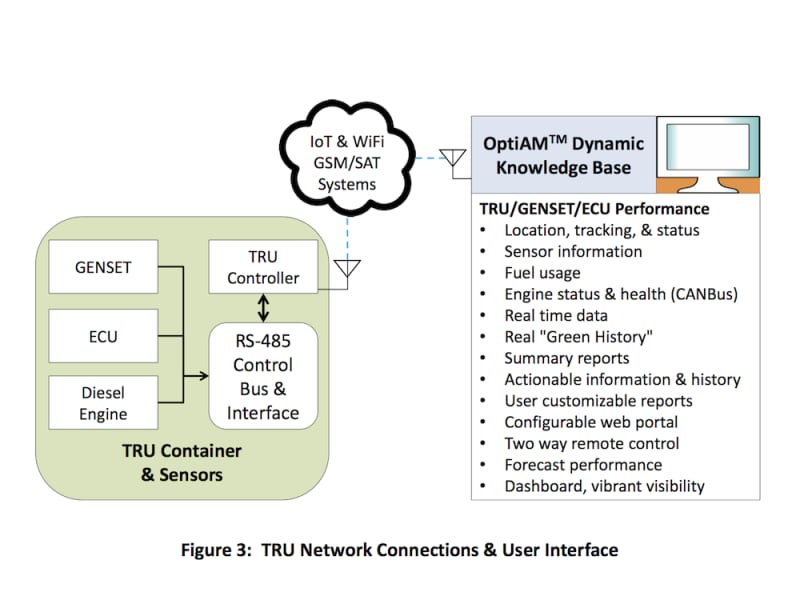Transportation refrigeration units (TRU) are utilized in the transport of perishable goods. The temperature and environmental controls are critical to the arrival of the perishable goods without damage or spoilage. Typical TRUs have sensors to provide data back to a central processing location such as temperature, humidity, and the operating conditions of the TRUs during transportation.
Each TRU has multiple sensors that can be activated to detect various conditions. Moreover, with fluctuating load requirements come contrasting requirements for the TRU’s electrical generator (GENSET) and environmental control unit (ECU).
The TRU sensors use an RS-232 interface today. It has limitations that are defined by one way communications, subject to external interference, and unable to tune the signal to noise ratio. We propose to upgrade the interface to RS-485 and add a programmable controller to enable two way and duplex communications, provide the ability to adjust sensor inputs and thresholds, communications bus for multiple devices, and change wireless communications means. Our solution monitors the TRU globally from point of origin to destination, optimizing the energy efficiency and maximizing performance.
Our TRU sensor package solution provides an important advance over the present state of the art. An RS-485 bus will connect directly to TRU sensors for transmitting information to a remote location and for remotely controlling sensor parameters. The GENSET and ECU associated with the TRU also utilizes the RS-485 bus and controller chip for bi-directional communications.
Application of sophisticated global tracking and monitoring technology is used to sense a failure, notify a mitigating authority, dispatch resources for lessening the damage, and redirect TRUs at the nearest point for remedial action. This reduces the amount of spoilage, eliminates shipping of damaged goods, repairs TRUs, saves perishables, and reduces energy and transportation costs. In addition, our proposed supportability solution, through the use of prognostic and health management (PHM) algorithms, can predict failure, identify choke points, and forecast performance. This optimizes the use of sustainment resources based on season, geography, distance, climate, eco-culture, and environment. All the while, the application is feeding a learning machine to determine trends, suggest marketing options, and promote our customer’s brand.
The manufacturability of implementing this solution is straightforward, in that it uses existing components (RS-485, GPS, two-way communications, data storage, IoT, proven sensors, etc.), and repackages them in an environmentally sealed unit. The data handling and processing is accomplished remotely and the recognized prediction and learning algorithms are tailored to meet the perishable transportation paradigm and challenge. The developmental design drawings are completed and an engineering development model has been built and tested.
The marketability for this product is immense. There are literally thousands of TRUs in use today. Initially, the market strategy would be to configure the high value shipments such as avocados, bananas or high-end coffee, then expand to other TRUs. Next, this technology can be used for any containerized product that is susceptible to spoilage/damage/impairment from transportation effects (time, distance, climate, and environment). See the attached drawings and graphics (Figures 1-3) for additional information and detail.
Like this entry?
-
About the Entrant
- Name:Gregory Thompson
- Type of entry:individual
- Patent status:pending








